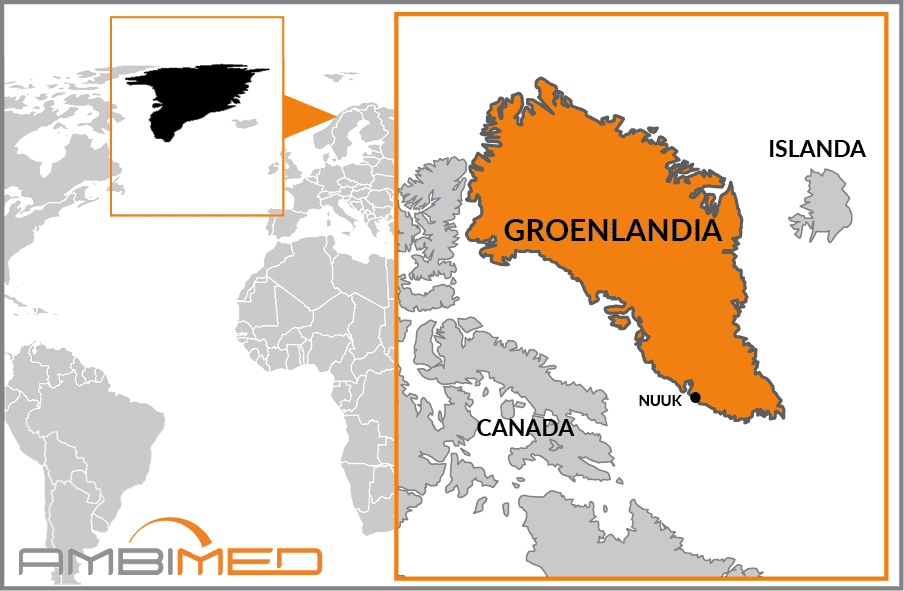Ambimed-Group
Travel Medicine
Business Travel Medicine
Easily manage your reservations and stay constantly updated on Ambimed services.

|
Country Name |
Greenland |
|
Continent |
North America |
|
Surface area |
2,166,086 km² |
|
Capital |
Nuuk |
|
Population |
56,421 (2021) |
|
Language |
Greenlandic |
|
Currency |
Danish crown |
|
Time zone |
-4hrs in relation to Italy |
|
Area code for Italy |
0039 |
|
Area code from Italy |
00299 |
Yellow fever vaccination is not required.
Infection typically occurs through contact with the saliva of an infected animal, usually by bites, scratches or licks near open wounds or membranes (mouth, nose, eyes). The most common vectors are dogs and bats, but cases of infection in other domestic animals have also been reported.
Caused by toxins released by the bacterium Clostridium tetani, the risk of contracting tetanus is endemic throughout the country.
Tuberculosis is a bacterial airborne disease. Vaccination is recommended for all travellers at risk of developing severe symptoms or of coming into contact with infected individuals. It is likewise recommended for all travellers under the age of 16 who plan to reside in the country for more than 3 months.
There have been no relevant reports.
The following vaccinations are strongly recommended as these diseases can be contracted anywhere in the world. Experts advise that you protect yourself and other travellers by making sure you are up-to-date with all of the recommended vaccinations. This will allow you to travel safely, while minimising the risk of exposure to infection.
A constituent nation of the Kingdom of Denmark, it is located in the far north of the Atlantic Ocean, between Canada and Iceland, and is the largest island on Earth.
The territory is almost entirely covered by a thick (average 1500 metres) blanket of ice, the Inlandsis, and is generally elevated, with maximum altitudes reached at the eastern end (Mount Forel, 3,360 metres). Deep tongues of ice probe into the sea to the west and northeast, from which icebergs often break away.
The climate is arctic, with maximum temperatures rarely exceeding zero, harsh winters, and strong winds. Precipitation is low, mostly snowfall, and decreases proceeding northward.